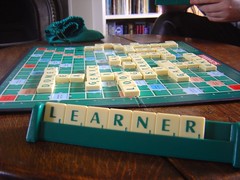A Learners’ View (ALV) Is Of Choices On The Shortest And Fastest Path To Learning, The Oxygen of Social Life.
Simplify, then Extrapolate. (ALV T-Shirt Wisdom)
Main Page: Introduction to “Classic Education: A Learners’ View (ALV) of Choices during Teaching and Learning”
 CLASSIC EDUCATION: A LEARNERS’ VIEW (ALV) OF CHOICES … describes teaching and learning as social processes rooted in choices. ALV sees commonalities across individual differences among these processes. We call these commonalities a language of learning (LANOL). We call the teaching-learning interaction that results in learning the law of teaching-learning (LOTL). They are grounded in experimental behavioral and social science studies of learning and teaching. Scientists used various names and theories for these studies over more than a century.
CLASSIC EDUCATION: A LEARNERS’ VIEW (ALV) OF CHOICES … describes teaching and learning as social processes rooted in choices. ALV sees commonalities across individual differences among these processes. We call these commonalities a language of learning (LANOL). We call the teaching-learning interaction that results in learning the law of teaching-learning (LOTL). They are grounded in experimental behavioral and social science studies of learning and teaching. Scientists used various names and theories for these studies over more than a century.
People learn; that’s common sense. Learning is a set of social processes; most people view learning differently. ALV describes learning from teachers as social processes of making choices; this is a newer view of learning. When applying ALV, teachers use LOTL; most teachers assume this law exists. Most do not have a name for it or a system to use it that’s grounded in over a century of experimental research.
A learners’ view (ALV) has been an implicit part of a classic education arguably since people started learning. ALV is the part of classic education that gives priority to how people learn the subject matter, that is, (1) to what learners do first, second, etc., and (2) to what teachers can do so learners will more likely learn the subject matter of teachers’ lessons.
Both ALV and LOTL represent the most reliable data of learning and teaching available to apply. Scientists have refined ALV with empirical data to principles of learning and to descriptions of applying these principles to accelerate, increase, and deepen (AID) learning promptly, sometimes dramatically.
Just as a straight line is the shortest distance between two points, a learners’ view (ALV) describes the bare minimum choices on the shortest and fastest learning path learners will likely take while learning something. LOTL codifies those steps, so teachers may predict and adjust the value of their lessons for learning.
From a learners’ view, learning is connecting dots: connecting (1) something concrete with something abstract, (2) something easy with something hard, (3) something known with something unknown, (4) something simple with something complex, and (5) something specific with something general. The acronym CEKSS (pronounced seeks as in a learner seeks a path to the next dot while learning) represents these five principles of learning. Teachers and others can monitor and manage these social processes.
To connect two dots, learners make observable choices from among at least 15 options across 5 choice points. We call this sequence of choices and options the ALV Path.
This view of choices brings the science of learning to the art of teaching. Choices highlight the state-of-the-art (SOTA) in teaching-learning, just as a classic education – the oldest, most enduring examples of subject matter available to learn – is the standard against which other forms of schooling and education are compared.
Teachers and others may use this view to forecast results of lessons before teachers offer them. Forecasts are based on probabilities that choices learners make while learning will result in learning. These choices first deal with how to do whatever the instructor says or does. This view represents a fundamental change for most educators and their supporters.
Together classic education and ALV offer learners the most choices for social life. It’s only a slight stretch to say that the most informed people have implicitly used ALV to earn a classic education, either through schooling or through independent reading and study, sometimes called the school of hard knocks.
Teachers may apply this science of learning through lessons that turn hopes into the reality of learners accelerating, increasing, and deepening learning promptly and sometimes dramatically. In these ways, educators contribute to the classic social goal of increasing life chances by people learning.
References
- A Learners’ View (ALV)
- ALV (a Learners’ View) as Social Processes
- ALV (a Learners’ View) Path to Learning
- Great Social Commission of Educators
- Language of Learning (LANOL)
- Law of Teaching-Learning (LOTL)
- Life Chances
- Rules of Teaching: Digest of a Learners’ View (ALV)
- Principles of Learning
Related Reading
- Classic Education: A Learners’ View (ALV) of Choices during Teaching and Learning
- Classic Education Coda
Last Edited: May 29, 2015
